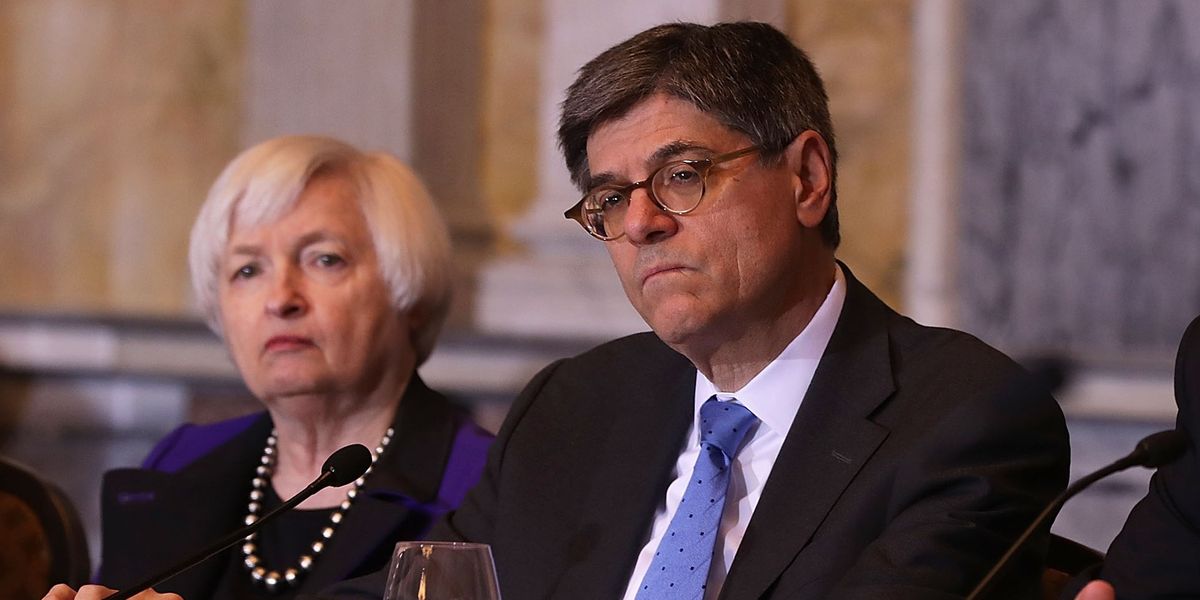
In prepared testimony for a Senate Banking Committee hearing slated for Tuesday morning, the chair of the Federal Deposit Insurance Corporation reveals that the 10 largest deposit accounts at Silicon Valley Bank held a combined $13.3 billion, a detail that's likely to intensify criticism of federal regulators' intervention in the firm's recent collapse.
When SVB was spiraling earlier this month, the FDIC, Treasury Department, and Federal Reserve rushed in to backstop the financial system and make all depositors at the California bank whole, including those with accounts over $250,000—the total amount typically covered by FDIC insurance.
"At SVB, the depositors protected by the guarantee of uninsured depositors included not only small and mid-size business customers but also customers with very large account balances," FDIC chief Martin Gruenberg writes in his prepared testimony. "The ten largest deposit accounts at SVB held $13.3 billion, in the aggregate."
Gruenberg goes on to estimate that the FDIC's $125 billion Deposit Insurance Fund (DIF)—which is financed primarily by assessments on insured banks and "backed by the full faith and credit of the United States government"—took a $20 billion hit as a result of the SVB intervention.
According to Gruenberg, nearly 90%—$18 billion—of the DIF loss stemming from SVB is "attributable to the cost of covering uninsured deposits." He added that the DIF absorbed a roughly $1.6 billion cost to cover uninsured deposits at Signature Bank, which failed shortly after SVB.
The FDIC chair's testimony comes as federal regulators continue to face scrutiny for glaring oversight failures in the lead-up to the collapse and backlash over the emergency response, which many have characterized as a bailout for the wealthy and well-connected given SVB's role as a major lender to venture capital and tech startups.
Billionaire Peter Thiel, whose firm was accused of helping spark a bank run by advising clients to pull their money from SVB, told the Financial Times that he had $50 million in a personal account at the bank when it failed earlier this month.
"The bailout really did protect billionaires from taking a modest haircut," Matt Stoller of the American Economic Liberties Project tweeted in response to Gruenberg's testimony.
Writing for The American Prospect on Monday, Revolving Door Project researcher Dylan Gyauch-Lewis called the federal government's swift action in the wake of SVB's failure "a good illustration of the enormous class bias in American policymaking."
"As soon as corporations and the wealthy run into trouble, elites trip over themselves, discarding both law and precedent, to rescue them," Gyauch-Lewis wrote, noting that federal regulators had to classify SVB's collapse as a "systemic risk" to the financial system—a disputed characterization—in order to legally guarantee deposits over $250,000.
For contrast, Gyauch-Lewis added, "consider student loan forgiveness. The legal justification is clear as day, and the authority itself is used regularly. According to the Higher Education Relief Opportunities for Students Act of 2003, the Education Department can forgive student loans as it sees fit in a national emergency."
"At bottom, the core reason SVB's depositors got bailed out had little to do with morals or even financial risk," Gyauch-Lewis argued. "It happened because they had rich and powerful friends with the ear of the president's chief of staff. Broke students don't. The students have to organize and campaign for decades to get something far worse than what they wanted, and for that to hang in the balance at the Supreme Court. The SVB depositors just had to whine on Twitter and make a few calls."
This content originally appeared on Common Dreams and was authored by Jake Johnson.
Jake Johnson | Radio Free (2023-03-28T10:55:21+00:00) ‘The Billionaire Bailout’: FDIC Chair Says the Biggest Deposit Accounts at SVB Held $13 Billion. Retrieved from https://www.radiofree.org/2023/03/28/the-billionaire-bailout-fdic-chair-says-the-biggest-deposit-accounts-at-svb-held-13-billion/
Please log in to upload a file.
There are no updates yet.
Click the Upload button above to add an update.